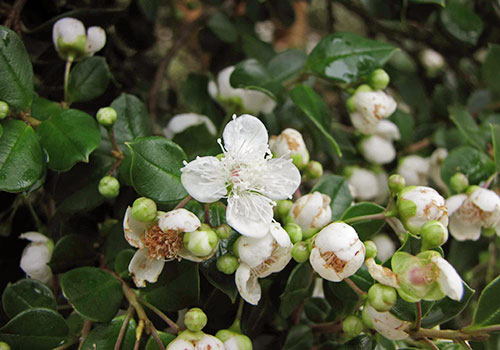Sky Staff Favorites for Fall: What Can I Plant Now?
As things quiet down and we settle in for the wet season ahead, we're taking a little time to share a short list of the perfect fall plants to fill in an empty spot in the garden for fall and winter interest.
We asked our staff straight up:
- What plants do we have this season that you think are rather underappreciated?
- What are the hidden gems across the nursery?
It's an ideal time to get things in the ground because warm soil temps and ample rain mean that plants will get a heads start for next spring. The only challenge is keeping your hands cozy as you plant, and putting up with just a little of that classic PNW rain. Take a peek at the fall plants we think deserve more love below, and maybe you'll find a few special things to add to your own garden this season. Happy Gardening!
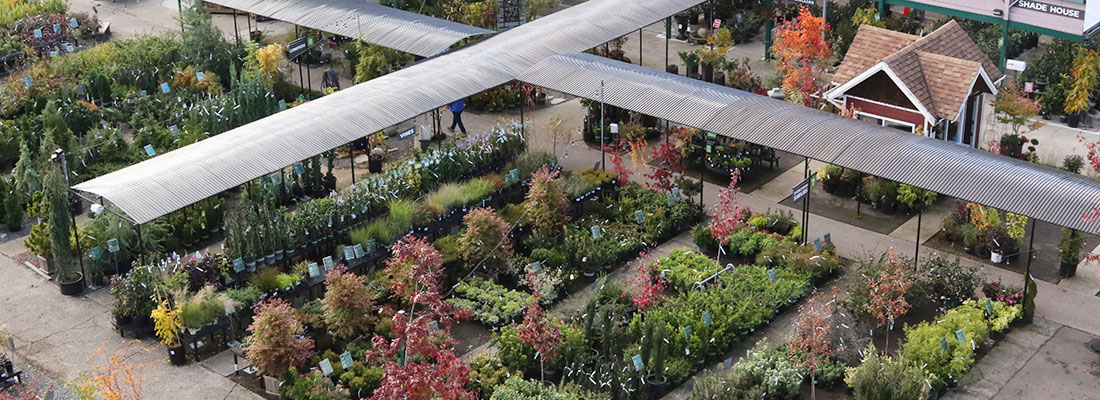
Nursery Department - Outdoor Tree & Shrub Yard
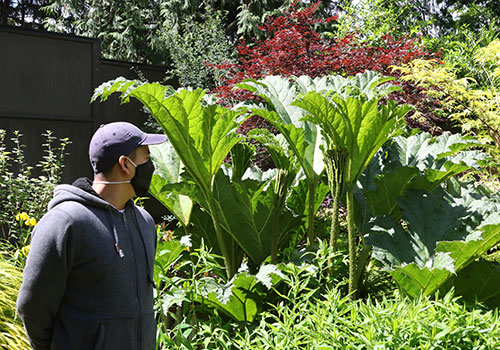
Gunnera
1. Gunnera tinctoria | Chilean rhubarb
- Deciduous shrub
- Best in part sun
- Grows up to 12' around
Our first favorite comes to us from Argentina and Chile. This deciduous shrub is best known for its striking prehistoric proportions, with leaves up to 7' across! And, it doesn't just LOOK prehistoric: the Gunnera genus can be traced back to more than 90 million years ago through the fossil record. Though the plant may not look like much this time of year, in the spring, large, lily-pad-shaped leaves will emerge on thick, spiky stalks, surrounding a red center flower. Hardy to 0° Fahrenheit and best in partial sun. Plant in moist soils; it's a great addition to stream banks, lakesides, or other riparian areas.
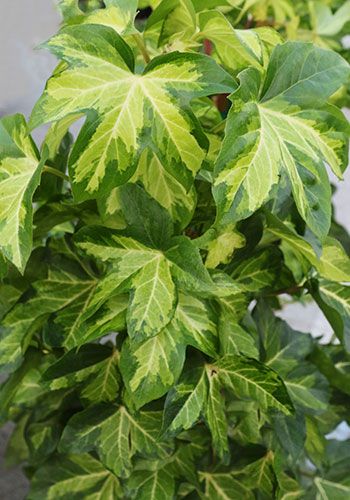
Tree Ivy
2. x Fatshedera lizei | Tree Ivy
- Evergreen vine
- Full to part shade
- 6-9' long by 3-6' wide
Another welcome addition to the shade house of our Nursery department is 'Fatshedera,' a cross of English ivy and Fatsia. We love this one because it is one of a few interesting and fresh vining solutions for a shady space with a contained growth habit, and, you can grow it indoors too!
Train upright onto a stake or trellis, or allow Fatshedera to spread as a groundcover. Even though it's classified as a vine, its' fatsia genetics mean that it won't bind to a wall on its own, and will require ties to grow upright. To encourage branching, prune off the tips.
3. Heptacodium miconioides | Tianshan Seven Son Flower
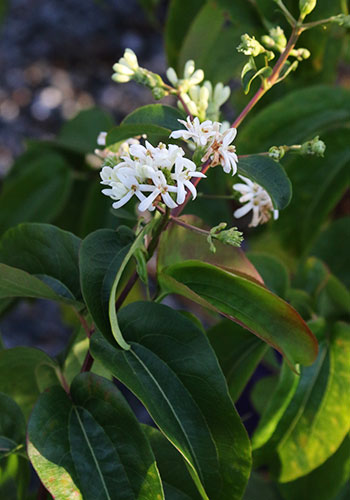
Seven Son Flower
- Deciduous shrub
- Full to part sun
- Approx. 8-12' tall and 5-7' wide
This one can be hard to find outside of university plantings and arboretums; a truly 'under-the-radar' plant with back-to-back seasonal displays that make it a stand out in any garden. Its namesake flower buds appear in summer and open into seven delicate white blooms with a light honeysuckle scent that attracts pollinators. In early fall the leaves turn to gold, and the fruit is surrounded with 'calyces' that turn bright red, making it look as though it's blooming for a second time. As it matures, papery, light brown outer bark splits to reveal dark inner bark; a standout pattern during bare winter months. Train as a tree or keep as a large shrub.
4. Luma apiculata | Chilean Myrtle
- Evergreen shrub
- Full to part sun
- Approx. 6-8' around, smaller if in container
If you're looking for something new, keep this one in mind for its gorgeous bark and beautiful blooms. Small, rounded evergreen leaves have a spicy/sweet fragrance when crushed. Come summertime, clusters of creamy flowers with showy stamens emerge, followed later in the season by edible berries, which can be made into sauces and jams.
Multiple stems show off the shrub’s cinnamon bark, which flakes off in patches to reveal orange and white undertones. When lit by the sun, the branches have a warm, almost glowing effect. In its native habitat of Chile and western Argentina, they can grow around a foot a year, reaching 30-50' tall! (Don't fret, they don't get that big up here.) Deer-resistant and drought-resistant once established, this shrub may not look like much in the nursery bed, but it has a lot to offer once planted in the landscape.
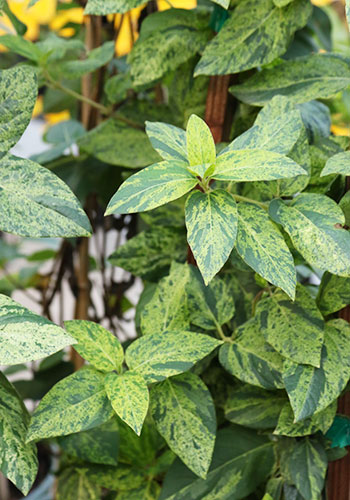
Mint Crisp Honeysuckle
5. Lonicera japonica | 'Mint Crisp' Honeysuckle
- Deciduous vine
- Full to part sun
- Approx. 8-10' long
Mint Crisp is an excellent choice for those who want the benefits of a classic, tried and true vine with a fresh, variegated twist. A semi-evergreen climber, this Japanese honeysuckle is frost-hardy to -15°F. Rapid growing... Its stunning marbled green leaves take on a pink flush later in the year, which is the perfect backdrop for fragrant cream and gold flowers to bloom from summer to autumn. Honeysuckles are known for their ability to bring an abundance of pollinators to your garden, and to thrive in a container or in the ground, as long as there is a trellis or support for them to climb.
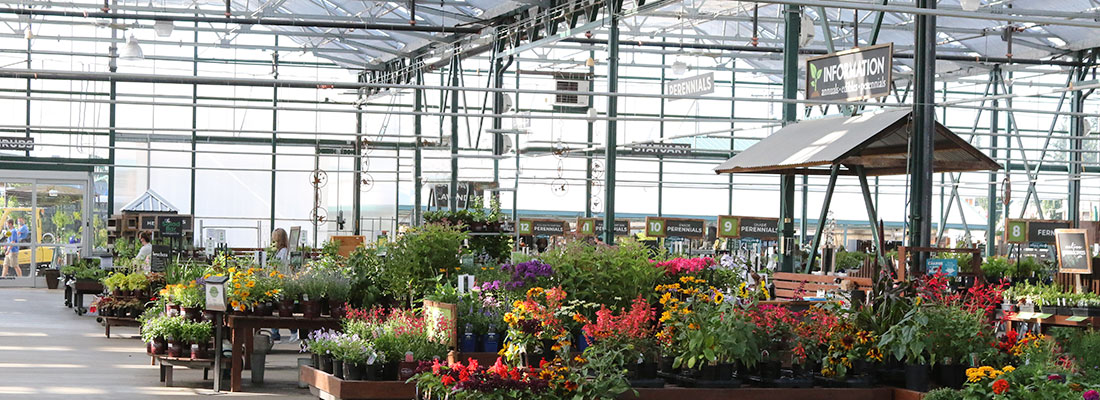
Greenhouse Department - Under the Glass Roof, Perennials, Annuals & Edibles
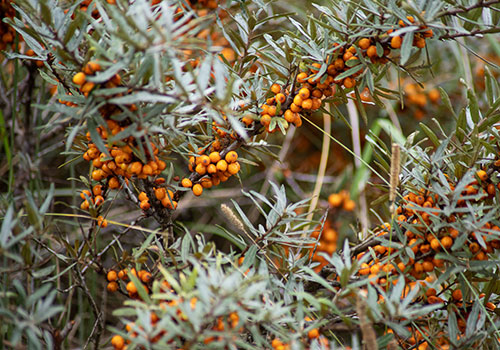
Seaberry
1. Hippophae rhamnoides | Sea Buckthorn or Seaberry
- Deciduous shrub
- Full sun for best fruit
- Approx. 10' around
Seaberry, also known as Sea Buckthorn, is prized in Asia and Europe for its Vitamin C filled, antioxidant-rich fruit. This attractive shrub is one of the most widely grown, northern-hardy fruiting plants in the world, yet many Americans have never heard of it! A native of Eastern Russia, they are hardy down to -40°F. Silvery green, narrow leaves stand in stark contrast to the bright orange berries which ripen from August-October.
Sea Buckthorn fruits have a tangy citrus taste often compared to passionfruit or pineapple, and are often made into juice. They are a great choice for backyard fruit production, especially for their drought tolerance and ability to 'fix' their own nitrogen! This means they improve the quality and nutrient availability of the soil simply by growing in it. Because they are wind pollinated, a male and female are required to produce fruit. However, one male can pollinate as many as 6-8 female plants. (Please note: fruit trees and berries can usually be found out in the tree and shrub yard, this one is just located in the greenhouse at the moment.)
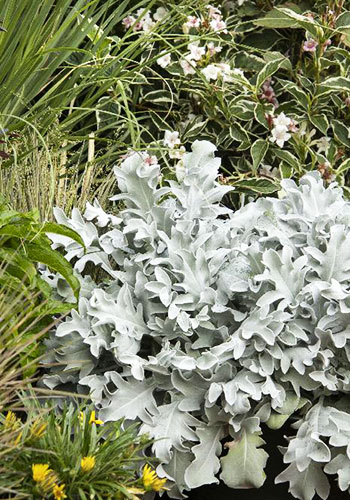
Snowy Owl
2. Centaurea ‘Snowy Owl’ | Silver Knapweed
- Annual / Tender Perennial
- Best in full sun
- Approx. 18" around
This drought tolerant tough annual (hardy in zone 9) is a great addition to mixed plantings. Yellow bachelors button-type flowers unfurl in the spring, but the true stars of the show are the eye-catching soft and silvery leaves. Sky employees have been snatching these up since they first arrived at Sky a few years ago because it's rare to find such a great high contrast plant of this size, shape and color for the landscape and in containers. And although it may die off in a cold winter, we've found this one to be hardier than expected in our area! Plant in containers or in the ground.
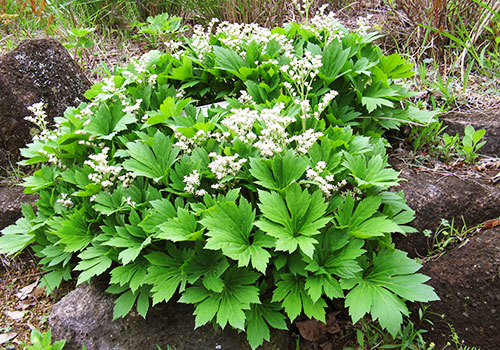
Mukdenia
3. Mukdenia & Mukgenia
- Herbaceous perennial
- Full to part sun
- Both grow to around 8" tall, 14" wide
Mukdenia, and its hybrid form Mukgenia are hardy, lesser known herbaceous perennials that offer vivid, long-lasting fall color. In the spring, long-stemmed groupings of flowers do emerge from the low-growing plant, but this species is most celebrated for their remarkable fall foliage. Maple-shaped leaves fan out bronze-green in spring, darkening to green with a deep red, purplish border lasting through the summer and into late fall. The effect makes for a striking autumn accent, either as a ground cover or colorful container planting. Great for woodland gardens and as an accent for borders. (To tell them apart, Mukgenia has thicker, more succulent leaves, more like a Bergenia.)
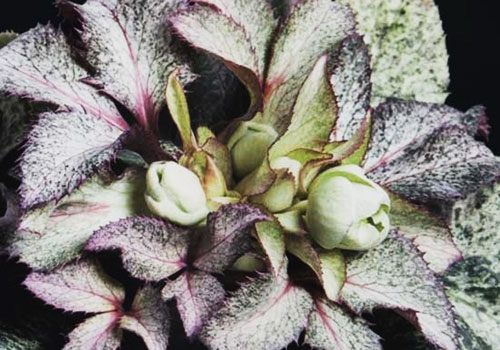
Snow Fever
4. Helleborus argutifolius
“Snow Fever’
- Evergreen perennial
- Part sun to part shade
- Grows to 12" around
Many people know and love hellebores for their lovely long-lasting blooms and glossy evergreen leaves. But once you've seen one, you start to think you've seen them all! Meet Helleborus argutifolius ‘Snow Fever’. This one has classic, creamy white flowers with light green overtones that bloom from late winter to early spring. But its thickly growing leaves are worth a second look. Their eye-catching variegation lasts all year long, transitioning from green and white into shades of deep purple and green, so that they appear almost as if they have been frosted with snow. 'Snow Fever' makes a great addition for the winter gardener looking for something new to add to their beds.
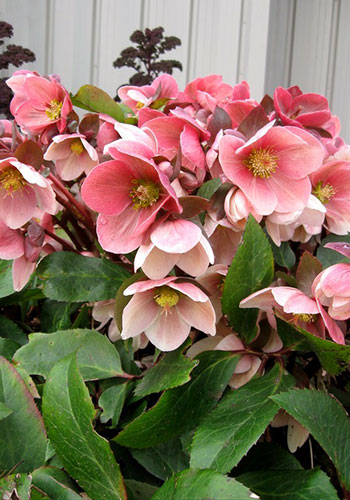
Pink Frost
5. Helleborus x ballardiae
Gold Collection® Pink Frost’
- Evergreen perennial
- Part sun to part shade
- Grows to 14" around
And finally, on our tour of hidden gems across the nursery, this particular hellebore is a hybrid variety out of the Gold Collection, which focuses on creating hellebores with an upright flower rather than the more traditional, downturned faces. This way, you can fully appreciate the beauty of the dainty blooms without having to bend over and take a closer look. Something we certainly do not take for granted as hellebore admirers at Sky.
Pink Frost has lovely pale to rosy pink flowers that arrive in January and bloom for several months and make for marvelous cut flowers. Both varieties grow up to 14" tall by 24" wide, doing best in part sun to shade. They are also deep and rabbit resistant!
All of these plants are currently well stocked here at the nursery, but our supply changes daily. If you are interested in getting something specific, please don't hesitate to call or email us to confirm prices and availability before making the drive. Happy Gardening!

